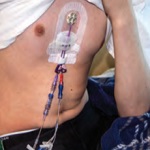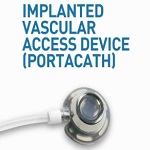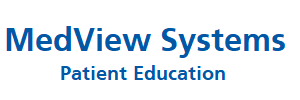

Central Line Dressing Change
A central line (PICC, port, Hickman or other tunneled catheter) dressing change is a sterile procedure. Because of this, we strongly recommend that you receive training by a healthcare professional familiar with central line care and maintenance. There are many subtle ways a sterile surface can become contaminated, which puts you at risk for blood stream infections. These infections can be very serious, and even life threatening. The central line dressings should be changed a minimum of every seven days – every 48hr if gauze is used. If at any time the dressing peels, becomes wet underneath, becomes dirty, etc. it should be changed immediately. All components that can be changed (extension sets, connectors, securement devices, etc.) should be changed whenever a dressing change is performed. As always, follow your healthcare provider’s recommendations for the care and maintenance of your line. Below is a description of the components in a standard dressing kit, and how they are used.
Guidelines, Specifications & User Manuals
Central Venous Access Procedures NIH
Changing Dressing on Central Line
Pediatric – Changing Central Line – Intermountain Healthcare
Helpful Information
Central Line Dressing Change
A central line (PICC, port, Hickman or other tunneled catheter) dressing change is a sterile procedure. Because of this, we strongly recommend that you receive training by a healthcare professional familiar with central line care and maintenance. There are many subtle ways a sterile surface can become contaminated, which puts you at risk for blood stream infections. These infections can be very serious, and even life threatening. The central line dressings should be changed a minimum of every seven days – every 48hr if gauze is used. If at any time the dressing peels, becomes wet underneath, becomes dirty, etc. it should be changed immediately. All components that can be changed (extension sets, connectors, securement devices, etc.) should be changed whenever a dressing change is performed. As always, follow your healthcare provider’s recommendations for the care and maintenance of your line. Below is a description of the components in a standard dressing kit, and how they are used.
Central line dressing change
A central line (PICC, port, Hickman or other tunneled catheter) dressing change is a sterile procedure. … The central line dressings should be changed a minimum of every seven days – every 48hr if gauze is used.
All components that can be changed (extension sets, connectors, securement devices, etc.) should be changed whenever a dressing change is performed. As always, follow your healthcare provider’s recommendations for the care and maintenance of your line. Below is a description of the components in a standard dressing kit, and how they are used.
Flushing Your IV Access
There are many different protocols for flushing your IV access and this depends on several factors. What type of line do you have (PICC line, port, peripheral line?) How are you using your line – continuously or intermittently? Is it one lumen or two? What type of catheter is it? What solutions does your doctor want you to use – saline alone or saline and heparin? Following are general guidelines for flushing – for more specific information, please consult your healthcare provider.
Nursing provides prefilled saline and heparin flushes for your convenience. They are ready to use; the solution is already in the syringe.
Wash your hands.
1 Gather your supplies.This should include alcohol wipes and your flushes.
2 Vigorously wipe the end of your connector attached to your line with an alcohol prep.
3 Take the syringe out of the outer plastic bag and remove the cap. Very Important: The end of the syringe must not touch anything else once the cap is removed! (The end of the syringe must remain sterile.
The syringe may have a little air bubble in it. By holding the syringe upright with the plunger at the bottom you can gently push up on the plunger and until the air bubble is gone and you see a drop of the solution come out the tip.
4 Attach the syringe to your connector at the end of your line. Do this by holding the connector in one hand, and twisting the syringe on, so it does not come off. You will need to exert some pressure to twist it on. The syringe should stay attached to your line when you let go.
5 Exert pressure on the plunger of the syringe to flush your line. The fluid should empty into your line with only slight pressure. Should you feel significant resistance and are not able to flush, contact your Healthcare Provider.
These syringes are one-time use only. You should not re-use a syringe as this will not maintain sterility.
If you are infusing a medication, you will connect the end of your tubing in the same way you attached the flush syringe – it will twist on. Be sure to wipe your connector vigorously with an alcohol prep before connecting!
You will always precede and follow medication with a saline flush. Heparin is used in some cases to maintain the patency of your line (keep your line open.) This would be used after the second saline. There is an acronym to help you remember: SASH
Saline, Additive (the medication), Saline, Heparin
Related Devices
Central-line-or-picc-line-dressing-change
Central Line Dressing Change A central line (PICC, port, Read more...
How to prepare and administer TPN Instructions
TPN Administered TPN administration into a vein, Read more...
Flushing a port a cath Instructions
Flushing a Port a Cath Normal saline Read more...
Dressing Change & Flush Port-a-Cath Instructions
Dressing Change & Flush Port-a-Cath A port-a-cath is a device Read more...
Access Port-a-cath Instructions
Port-a-cath A port-a-cath, also referred to as Read more...
Central Line Dressing Change Instructions
Central Line Dressing Change A central line (PICC, port, Read more...
 Patient Learning Center
Patient Learning Center

